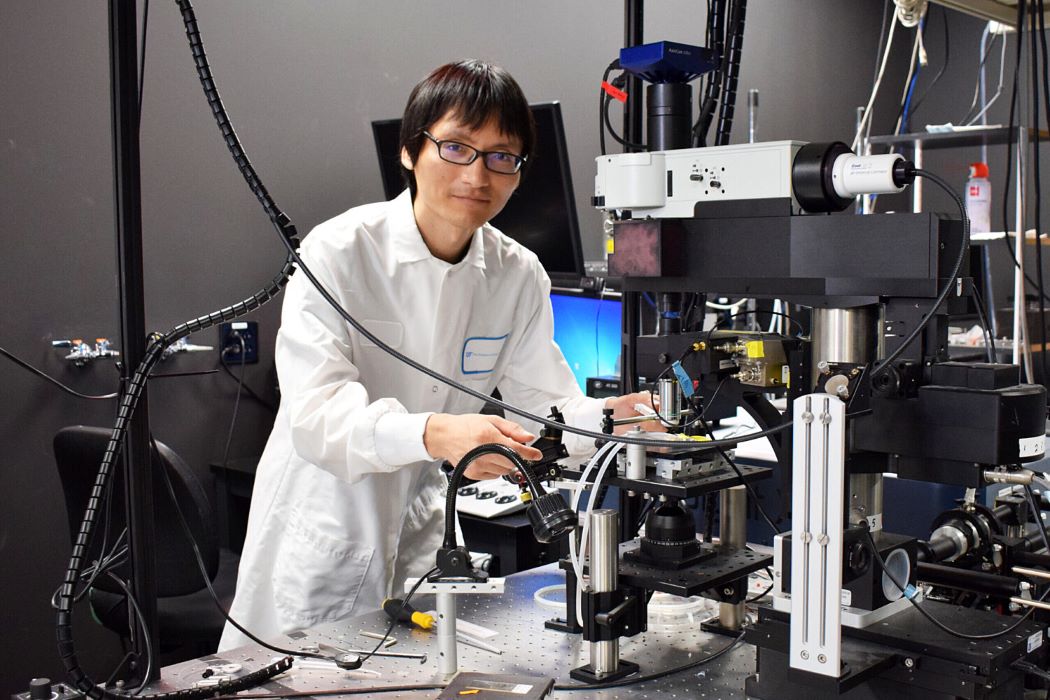UF neuroscientist uses AI to map learning, decision-making, to discover how brains work

Ryoma Hattori uses advanced laboratory techniques and AI to make discoveries about how the brain learns.
With trial and error, repetition and praise, when a puppy hears “Sit!” they learn what they’re expected to do. That’s reinforcement learning, and it’s a complex subject that fascinates neuroscientist Ryoma Hattori, Ph.D., who recently joined The Herbert Wertheim UF Scripps Institute for Biomedical Innovation & Technology.
Hattori focuses on understanding and mapping reinforcement learning and how the brain integrates information to make decisions. He also studies how the brain comprehends numbers. What seems simple on its face is actually stunningly complex. The human brain has approximately 86 billion neurons, which make more than 100 trillion connections.
Hattori says many factors play into the decision-making process. Something as simple as deciding where to eat may involve a matrix of memories and judgments, and hence, many areas of the brain. One restaurant has good food and service, another, so-so. One has higher prices, another is cheaper. Experience provides the inputs that must be assigned values and considered for the decision to be made.
“It’s very difficult to integrate all of these processes, and yet, somehow, our brains do that,” Hattori says.
Understanding the mechanisms that underlie this process may prove important in addressing psychiatric and autism spectrum disorders, he notes.
“Many psychiatric diseases and neurological disorders feature some impairment in decision-making,” he says.